![1016224_645821868779342_1800825772_n[1]](https://www.gingkoedizioni.it/wp-content/uploads/2013/07/1016224_645821868779342_1800825772_n11-202x270.jpg)
![941253_645822245445971_525140900_n[1]](https://www.gingkoedizioni.it/wp-content/uploads/2013/07/941253_645822245445971_525140900_n1-264x198.jpg)
BLUE JEANS
At Sicis showroom Wanchai Hong Kong on the 17th of July,
2013. Curtesy of Emanuele Travagliati – citizen of Verona.
The first real Blue Jeans known and documented seems to be those of Italian National hero Giuseppe Garibaldi.
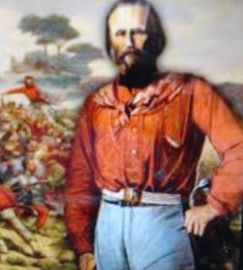
They are kept at the Museo del Risorgimento in Rome, just inside the Altare della Patria, the monument where the Unknown Soldier of WW1 is resting.
They are made of duck cotton in a light blue colour and they look like Woad dyed rather than indigo dyed, I don’t know if they were ever checked before. They have a patch on the left knee. Garibaldi wore them when he united Italy in 1860 with a thousand red shirts volunteers.
Probably they are much older than 1860, some historians say that he inherited them from his father.
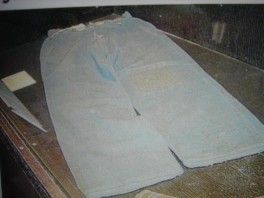
While forced into retirement on Caprera Island he gave them to a friend, asking him to pass them to one of his gardener, but this person was smart enough to understand their historical value and kept them, handing them down in his family.
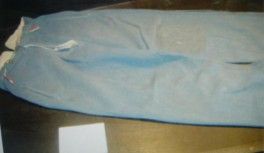
The name blue jeans is a corruption of the name blue of Genoa and Denim is a corruption of de Nîmes, a city in France.
The fabric produced in Genoa was cotton duck (from the Dutch doek that is to say canvas) in plain weave and were not always indigo dyed.
In Nîmes, France, they were producing a kind of twill, a mix of wool and cotton deemed very sturdy.
Levi Strauss had placed small orders in Genoa where he purchased light brown canvas in the range of 8 oz. but no samples are left because of the fire that destroyed Levi’s archives in 1906.
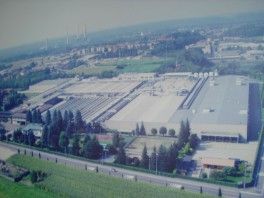
I am in charge of sales in Asia for my company, TRC Candiani, in Asia. TRC was founded in 1938 and is 20 miles far from Milan and very close to Malpensa airport. We are producing around 35 million meters of denim fabric each year. We fight them keeping a high and constant quality.
China on the other hands has hundreds of denim mills and produces billion meters, same as India, Pakistan, Turkey and many other countries.
By watching a simple pair of jeans you cannot imagine the complexity of the work involved in its fabrication, the science and technique which had evolved over the centuries.
The subject is vast, but today I’ll limit myself to give you some snippets, just some hints about this sector. We cannot treat it in a complete way because there is not enough time.
Blue Jeans is the quintessential iconic garment, part today of our daily life and our dreams, as we sell fabric to build emotions and dreams.
I think I am qualified to speak to you here, even if among us there some top experts. But, in a way, they are specialized in their own field and perhaps they don’t possess that general view which I possess. This indeed can save my day!
We may say that for denim innovation and quality Italy and Japan are at the forefront. But while Japan is sticking on tradition, Italy is stronger on innovation.
There is very limited production or no production at all in the US, perhaps some at Atlantic Mills and Cone Mills – but the US still have production of Jeans garments, mainly in California, an industry which is Hollywood’s driven.
Hong Kong was prominent in the production of Denim in the ’60 and ’70 but with the opening up of China all the Mills have all moved over the border or have just closed down.
Today we wear what we like and we look elegant just as that. No matter if our pants are broken or oiled, but this is a rather new concept coming to us straight from the French Revolution. Before the French revolution butchers were forced to wear butchers’ clothes, miners, miners’ cloths and so on.
That new law in the Revolutionary Parliament was proposed by a young and gifted writer: Philippe François Fabre d’ Eglantine in 1793. He did it to contain feminine revolutionary activism: certain women forced people walking on the road of Paris to put on their head the Phrygian cap of the revolution. Anyway the obligation of the Convention to keep the cockade remained in force. So, at the end, he drafted and they passed a law according to which one can dress the garment he liked, provided that they kept the cockade. Fabre d’Eglantine lost his own head one year later, on the guillotine, accused of having schemed against Robespierre.
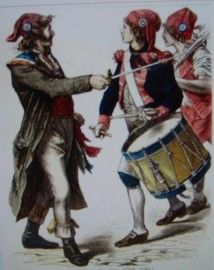
When we talk about Blue Jeans and Denim two things spring to mind COTTON and INDIGO colour.
Cotton
The worldwide market of cotton is huge, estimated to be worth 425 billion USD per year.
Cotton is an Asiatic fibre. The centre of cotton production was India 3000 years before Christ, in the Indus Valley were it was cultivated and then it spread around the world. Some cotton fabrics were found in the Pharaohs’ tombs.
In Europe we had not idea where cotton was from. Greek historian Herodotus wrote that the Persians invading Greece were wearing cloths made with wool growing on trees.
Some cotton fabrics reached Rome but, like silk, was a rare and expensive fabric. Romans were normally wearing linen, wool and hemp.Mongols created the first Cotton Board of the world in 1289 and taxed it since 1296.
The spinning wheel was probably invented in China during the Warring States Period (IV century B.C.) and then it spread to India. There is an old Chinese proverb: ‘Men plough and women weave.’
Indian spinners and weavers were famous for quality and price so much so that the British had been forced to issue a Bandana Act in the 18 century to forbid imports from India, because they had very fine yarns and beautiful prints. Their protectionist measures remained in force well into the last century; we all remember the picture of a defiant Gandhi spinning his own cotton.
British traveller Mandeville of 1320 spoke of a “wonderful tree which bore tiny lambs on the endes of the branches. The branches are so pliable to let the tiny lams to graze on the ground.”
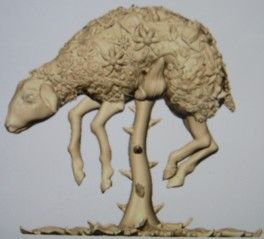
Raw cotton was first imported in Europe by the merchants of Venice and Genoa, together with pepper, lacca, sugar, pearls, cotton fabrics at the beginning were actually called bocasini (silk and cotton mixed), then also indigo bricks for dyers starting from the XIII century.
By XII century Lombardy specialized in spinning and ginning cotton. Piedmont and Veneto followed and later the technique spread to France Switzerland and Germany.
The earliest examples of cotton spinning and weaving were in imitation of Syrian and Palestinian textiles. Milan, Pavia and Cremona produced large quantity of fustian (since the cotton warps were too weak they used linen instead). The only exception of high quality cotton fabric were found in Milan; all the others were cheap products. By mid XIV century the Milanese could not keep up with competition from Switzerland and Germany, weakened by plague and warfare.
INDIGO the magic colour of jeans.
Indikon in Greek means to dye.
Then it passed into Latin as Indicum and then Italian Indaco and English Indigo.
It is a dyestuff possessing a deep sapphire colour. Newton used Indigo to describe 2 new primary colours he had added to the existing 5 describing the Rainbow (1675’s Lectiones Opticae.)
Indigo was extracted from the Indigofera plant. India is considered the centre where it was first extracted, in prehistoric times. It is a complicated and time-consuming job and for this reason indigo was an expensive stuff. Indigo dyed fabrics have poor fastness because it sticks on the surface of the cotton fibers. As it is it is not soluble in water, it must be reduced first (leuco-indigo). A Leuco indigo solution is reduced to achieve some affinity with cotton and is in this state soluble while in its normal state is insoluble. Removed from the solution and exposed to air it absorbs oxygen and get insoluble again.

In Japan they used bacteria producing hydrogen to reduce it, in Europe urine and zinc powder.
The first indication of such dyeing methods is in a cuneiform tablets in Neo Babylonian, VII B.C. where it is described how to use it with repeated immersions and airings. Romans used it also as medicine and as pigment for painting.
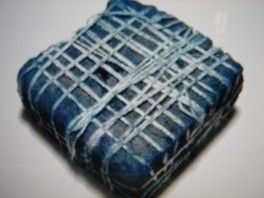
It was synthetically produced by Bayer in 1878 starting from Isatin and then in 1880 from 2-Nitrobenzaldeyde. But it became industrially available only around 1901.

Other plants of the same family are known. In Europe we were mostly using WOAD, extracted from the plant Isatis Tinctoria, similar to Indigo. After the Portuguese opened the Western Route around 1512 Indigo was imported and was later cultivated in America and Africa. Together with import from the Far East this lead to an Indigo War in France and Germany, which were compelled to forbid its import to protect their domestic Woad Industry.
Indigo it is still widely used for food under the indication E132. The Tuareg, the blue men of north Africa, traditionally wear indigo dye wool, with poor fastness, hence their denomination.
Today we do apply sulphur dyes at the base of some denim before applying indigo, to change the hue and make it more fashionable. So we apply first yellow, or red, or black and then Indigo on the warps.
What is special about indigo? It has a large molecule and it is very brilliant, like having micro sapphires which are stuck on the surface of the cotton fibres. It is one of the few colours that when fading stays brilliant. You may find in internet pictures of a pair of jeans found in a mine, early Levi Strauss, which were sold on eBay, their colouring in spite of everything is still brilliant.
The History of the Colour Blue
Why are we seeing so much blue colour around? Was it common in the past?
No, not so much in the past, it is a color not present in Paleolithic times. Fabrics in antiquity were mostly dyed in red. In Latin coloratus (coloured) and ruber (red) were synonymous
Blue for clothes was mostly used by Celts and Germans, who were using Woad. But it was a pastel coloured blue, not a deep blue, a plant of the same family of the indigofera.
The common Mongol citizens were called Blue Mongols; the nobility was called the Dark Heads to distinguish them from the clergy who had shaved heads.
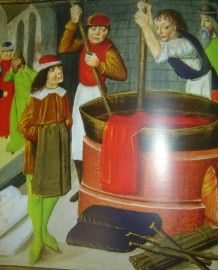
The first block of Indigo imported in Europe and Rome convinced Europeans that it was obtained from stones not plants. This idea remained fixed until well after the discovery of America where some varieties of Indigo plants were growing (while none was native in Europe).
Starting with the XIII century blue pigments were greatly used for the Church, especially as the color of the mantel of Holy Mary.
Then French Flag, blue with gold flowers of Lily, was adopted in the XII century. Because of this it came to symbolize Nobility. Their national flag still has a portion of it.
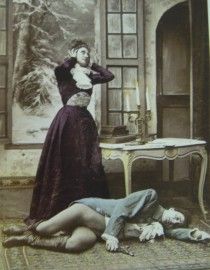
Up to the XIV century Black was the primary colour, loved by reformers and then by counter reformists. Red was considered the colour of Rome and the Papists, as well as…whores. Nixon’s wife Pat, in 1974 during her historical trip to China received pressure by so called experts (like Malreaux) not to wear red, but she did her own way and no one criticized her for that.
HOW TO PRODUCE DENIM
Quality Denim is produced in vertical mills only, you cannot go to the market and buy yarns, as they all do for other kind of fabrics and to keep a constant quality.
The only exception to this rule was Hong Kong who had a very strong denim industry starting from the ’60 but those were different times, there was such a demand for denim that buyers accepted anything, even shading and spots.
The Shanghainese had flocked to Hong Kong in ‘50s and some did set up cotton spinning mills, then they begun weaving and when there was demand for denim from the US they were quick to react. Denim Mills in Hong Kong were placed on different floor levels, quite a sight!
But in Hong Kong they did not developed local brands, and so the industry just faded away, moving across the border, inside China.
You have to start with bales of cotton. Each mill has his own formula, or cocktail of cottons, often a well kept secret.
Then you have to spin and then dye the warps. This is another particularity of denim no longer common with other kind of fabrics. After dyeing the warps, dry, size them and then you go for weave inserting a white pick inside the warps and go on with the finishing.
This is the tradition way and that explain why they fade white with time. Perhaps at the beginning it was made to save money and to make weaving easier – if you insert a weft that has been dyed and sized, your loom become a mess very quickly and the fabric cost will go up.
It is today a process in evolution even if for 2000 years there were no major changes.
The Rope dyeing machine was invented in 1915 in the US and it is still considered the true indigo dyeing machine even if the European version (actually Hong Kong version) is more in fashion: with less space, less people involved. Before you could reach a darker colour with a Rope dyeing machine but with the concentration reachable with pre reduced indigo today you cannot see the difference with a slasher. Also the Looptex machine – a variation of the slasher type – was first patented in Hong Kong.
We use projectile looms but the shuttle looms, abandoned in the ’60, are back again. The particularly of the shuttles lays in the creation of a selvedge where the yarns are inserted not cut like in a rapier type machine or in a projectile type. Shuttle looms are perfect to imitate the old look and the old feeling.
YARNS FOR DENIM
The original yarns were ring spun, and today we use ring spinning frames, in imitation of the ancient hand spinning. Then in the ’70 in Czechoslovakia they invented Open-End spinning machines, 4 times faster, where the cotton fibers were blown together and twisted. They disappeared at the end of the ’90 but today the ring spinning has came back. Today most yarns are spun with intentional defects, reps, irregularities in order to imitate the product of the old spinning machinery.
WASHING
Here Italians do it even better than Japanese. Washing with pumice is called stone washing – sandblasting is now forbidden – then laser, digital printing are also used. If you make a mistake in washing you will not sell, so it is an important point of your selling strategy. You have to consult a guru able to forecast which washing will be popular in the next season.
It is something that was noticed rather earlier. Even when Levi Strauss was still alive, washed blue jeans look better than unwashed! Perhaps a consideration to be made is that dark indigo dyed trousers during the first wearing will make your white underpants turn blue because of poor fastness of indigo.
Even the Spanish nobility in the XVII century wearing back cloths used to wash them down as a demonstration of detachment of worldly affairs.
Today we find a lot of garage wash in Japan, good only for Indigo purists for limited editions of expensive garments.
FINISHING
The traditional finishing for denim is Sanforization. It is a process invented in the ’30 by Mr. Sanfort, that is to say it is a compressive shrinking. You find old jeans with indicated size 34 that are perhaps size 30. Why? Because they kept on shrinking and twisting. Sort of always alive on you.
Now the varieties have greatly increased: application of resins to increase the washing effect of light and dark, film coating, foam coating, sulphur before application of indigo in order to change the colour hue.
The 3 great brands: Levi Strauss, Lee and Wrangler.
Levi Strauss
Levi Strauss remains the quintessential brand of Blue Jeans even if this company seems to have missed the train around the ‘80s.
Let’s consider Lob Strauss (later opted for the name Levi) was born in 1829 in Bavaria, Germany. His father was a peddler. Since Roman times Jews were peddling, in Gaul following Caesar’s legions they were selling stuff to the soldiers. Jews could not own land so they had to find jobs different from farming. He was made an orphan at 16 and soon after he took a ship in Bremen to New York in 1847 with his mother and sister.
In New York they met his brothers Jonas and Louis born to the first wife of his father. Having no better options also Levi Strauss picked up peddling: he was carrying up to a 100 pounds of weight.
In 1853 he moved to S. Francisco because gold was found in Sierra Nevada and there was a rush, all prices went out of the roof. Levi Strauss demonstrated there his great marketing skills.
He had bought some heavy canvas for tents for miners – perhaps from Genoa – but then they suggested him to make trousers instead.
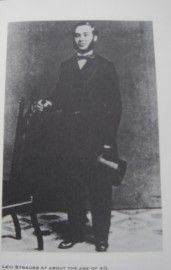
One of the best legends is this:
A miner complained to him that he was losing gold powder from his broken pockets, thus he needed stronger trousers. That is how Levi Strauss thought about working pants for miners.
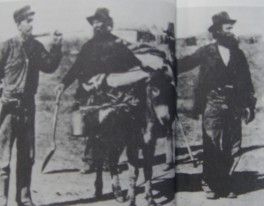
David Stern married Levi’s sister Fanny and Levi Strauss settled with them – he never married – founding the Levi Strauss & Co. together with Stern.
Then Jacob Devis proposed to use rivets, and Levi Strauss wrote a letter to him on July 2, 1872 proposing to cooperate. They could not patent them for all garments but only for the pockets. He bought shares of the Mission and Pacific Woollen Mill.
First jeans made by Levi’s were of lighter material, probably canvas (called duck in the US) woven in Italy. The same material used for Columbus sails. Colored in light brown, as some of early Levi Strauss jeans.
He had the idea of using orange colored threads to distinguish Levi’s from competition and because that colour matched his copper rivets.
Then he had the idea of an Oiled label promising free replacements if they ripped, with the image of two horses pulling a pair of jeans but unable to rip them aside. It was changed into leather in 1886.
Levi Strauss was a marketing genius, far ahead of the pack. He invented the branding of garments.
Rivets were first made of copper, then in a copper alloy. Those used in 1873 bear the engraving ‘May 1873 patent’ which is taken as the birth of true blue jeans.

In 1890 they were known as 501 trousers. They had received a lot of denim number 501 from XX Amoskeag (New Hampshire) with denim weighting 9 oz. later changed in 10 oz. They were sold slightly oversized to allow shrinking.
Duck overalls were terminated in 1911. These were the first pants produced by Levi’s, before the blue colored ones.
In 1890 Levi Strauss adopted the two arc design for the back pockets with orange threads, like the wings of a seagull. This is the oldest patent for textiles and it is still valid, even if proper registration was made only in 1942.
In 1935 Vogue accepted the first advertisment for Blue Jeans. The red flag was added in 1936 that was the first outside label on garments ever, to combat imitations.
1915 Cone Mills of North Carolina start to supply Levi Strauss & Co.
Levi’s Jacket (called blouse) was designed in 1905 but that model had only one pocket, called 506 then 507 with two pockets.
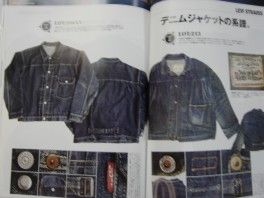
The trucker Jacket 557 was marketed in 1962. This is a symbol of the movie Easy Rider, of On the Road by Kerouac and Woodstock.
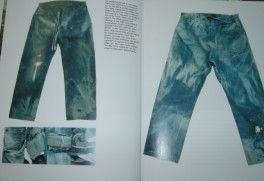
The crouch rivet was eliminated in 1940 (there are several tales about this) if you find a Levi’s with that crouch copper rivet you have a few thousand USD in your pocket. There were complains because if you get close to a fire, then the copper rivet will get hot and you will get burned in a male-sensitive area…with cowboys jumping under the moon.
Rivets at the top of the pocket had been taken away on 1939: they were scratching saddles and chairs.
In the 80s blue Jeans were in decline in all Western countries but went up in communist and muslins countries as a mark of dissent.
Levi Strauss used right hand twill for his garments, while Lee used left hand twill.
Old Levi’s have side seams twisting in front, while Lee tend to move back. 1964 Wrangler adopted the broken twill construction to combat twisting.
Levi Strauss died a billionaire in 1902. He had been a philanthropist helping to set and finance orphanages and schools.
We don’t know much about the early years because in 1906 San Francisco and Levi Strauss headquarters were destroyed by an earthquake followed by fire.
H.D. Lee
They began production in 1911 in Kansas.
In 1911 they invented the Union All (tuta) shirt and trousers attached. They were the first to introduce the zipper fly on blue jeans in 1926. Levi’s follow them it only in 1954. Levi’s had always used button-fly since the beginning.
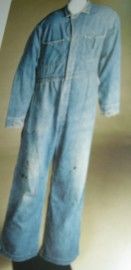
In 1933 they invented the Storm Rider Jacket with internal lining and corduroy collar. This soon became an American classic. Lee 101 are the essential Cowboys jeans, as they were marketed as such.
Wrangler
First real jeans in 1946. But they had a longer story as part of the Blue Bell denim company. Their image was the cowboys Wrangler in American means cowboy.
They were using extra wide belt loops to allow large rodeo buckles to be worn. They were the first to invent denim shirts with snaps instead of buttons. One of their designer saw a cowboy with his shirt taken up by the horns of a bull, he tough that with snaps that would have never happened.
They invented the flared jeans a symbol of the beat generation in the ’60.
They adopted broken twill construction to avoid twisting.
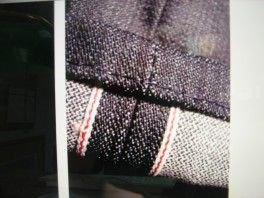
’60s
Brushed denim was introduced as well as colored denims.
James Dean was a fan of denim. Not so Elvis Presley.
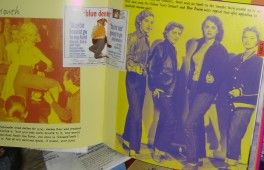
Woodstock concert, half a million young people wearing jeans. More women wearing pants. Start to become the garments of protest against society, hippy generation. San Francisco was one of the centre of the hippy movement. Levi Strauss was at the right place in the right time, another Gold Rush.
’70s
Elephant legs are common. Blue jeans become status symbols no more something to bring people together. Only cowboys and gays were still wearing real blue jeans, all the other was wearing fashion jeans. Here Levi’s perhaps missed the train at the end of the ’70s; they should have developed a fashion section.
Levi Strauss dropped the Big E in the flag label. A very important point for collectors. The date is not sure, probably early ’70.
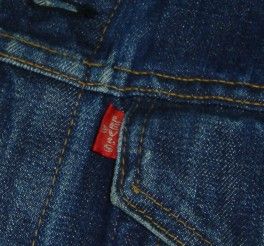
By 1978 the old good jeans were dead in the US, dead certificates signed by Gloria Vanderbilt, CK, RL and many others.
Birth of the first Italian brand of jeans, JESUS JEANS.
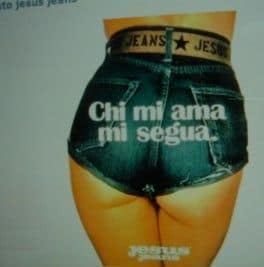
Cavalli began buying stock jeans in the US and selling them in his shop in Florence.
Candiani producing Denim in 1976. Fiorucci, Rifle etc.
’80s
The Year 1981 market the peak of sales of blue jeans worldwide, later sales declined. It coincided with Ronal Reagan presidency, a fan of blue jeans.
Customers were tired of new designers of hippy jeans. Because contrary with traditional jeans they were out of fashion after a season. The worst enemy of blue jeans are the chino pants, when one is strong the other is weak.
Beginning of strong stonewashing with pumice stones and chlorine bleaching.
In 1985 Levi took out the red thread inside the 501, a suicidal move. Single red line is gone, huge difference in price for old jeans. They put it back in 1999. While in Europe and the US blue jeans declined in Japan the nostalgia for the old west fuelled by antiquarian models was taking roots. Within the Soviet Block and Islamic countries people were willing to pay a fortune to have a pair of jeans. It was a symbol of defiance.
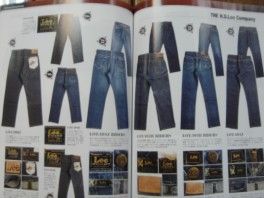
At this time an Italian Adriano Goldschmidt in Cortina created the fashion the modern de luxe jeans which are a recreation of the past, sort of antiquarian models. He bough a roll of Kayara fabric, Japanese, and ask a tailor to make jeans. The tailor charged him a lot and he had to put up the prices in Cortina’s mother shop. They sold like hot cakes and he understood that there were potential there. He founded DIESEL, then REPLAY and several other brands. Citizens AG Denim, now he is living in L.A.
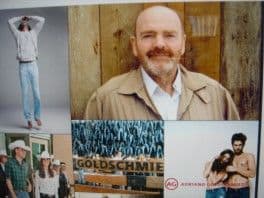
ANTIQUARIAN DENIM.
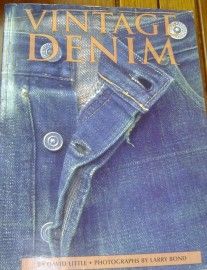
2000 tons of vintage jeans are shipped every year from the US to Japan ending up mostly at Shibuya Street vintage denim shops. Kenji Hirano is the founder of the craze.
If TRC exist and prosper is because of the allure of antique jeans which we are recreating, our customers are driven by emotions and dreams, as I said before. This created a multibillion industry. In Itself denim should not exist because of poor fastness and a difficult industrial production.
We are all trying to imitate old pants. The high end denim industry in Italy and Japan would have already closed doqwn without this allure; unable to keep up with the competition from cheaper producers.
The Japanese, as I have already said, want to have the original stuff Italians want to have something that looks like the original stuff.
I remember Sugiyama san, the chief of Levi’s Japan, now moved to Guess. He told me that in his dream was the discovery of a huge warehouse somewhere in the US full of 1920 denim fabric, millions of meters, with original buttons, threads and rivets. That is what they want.
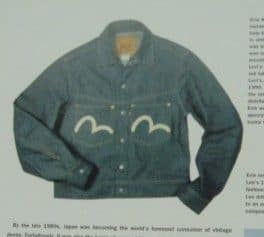
Just look at the story of Evisu because it is symptomatic, they started as EVIS (Levi without the L) and they did sort of copy everything: the red flag and labels and exaggerate the stitching on the back pockets. Rumors went around that they had bought the original looms of Cone mills, that made Levi’s people angry with them. In some shops in London they called police to cut their red labels.
The best investment is always Levi, then Lee and Wrangler. But also other brands created in the US are reaching high prices. The so called Depression Denim is growing very fast and is a good investment. Also the military denim, used in the US navy and air force, if the quality is ok and all the marking originals it may cost you a few thousand dollars. JC Penny, Montgomery, Boss of the road. Roebuck, Chicago Sears. Also the US railways were using denim at the turn of last century.
The oldest Levi Strauss jeans predating the 501. Probably made early 1880 and with the white selvage typical of Amoskeag denim, in New Hampshire, was found 70 years ago in a mine. Another early model found in a mine was bought on eBay in 2001 for 45.000 USD.
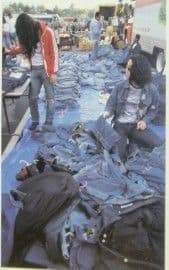
Fashion denim is hard to pick up because some of the denim produced in the seventies and eighties had open-end yarns, not ring. So the hand feeling, the color is not good. Indigo has a long tradition in Japan it was used by farmer because they believed that it kept snakes away.
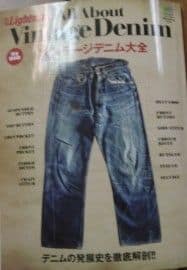
Will denim survive in the following years? I believe so because it is flexible and adaptable.

Why jeans are still selling so well?
Women look younger!

No need to press and ironing. Throw them into the washing machine, no softener, hang and they are ready to wear. They will look three-dimensional and raw.
If you combine them with some other elegant cloths and jewellery you will create a great but pleasant contrast. A Prada jacket, Bulgari jewels and a pair of 1930 jeans, broken and oiled and you will look like Goddess Venus.
Comfort stretch and super stretch blue jeans now make more than 50% of the market.
Low waist blue jeans are also an Italian invention, Alberto Biani did it first then it was taken on Jeans.
![1069411_645822138779315_928426818_n[1]](https://www.gingkoedizioni.it/wp-content/uploads/2013/07/1069411_645822138779315_928426818_n1-264x198.jpg)
![998854_645822358779293_1244063702_n[1]](https://www.gingkoedizioni.it/wp-content/uploads/2013/07/998854_645822358779293_1244063702_n1-264x198.jpg)
![421220_645821965445999_1448901212_n[1]](https://www.gingkoedizioni.it/wp-content/uploads/2013/07/421220_645821965445999_1448901212_n1-264x198.jpg)

Angelo, veramente interessante ed avvincente. grazie
Grazie, Mauro
As I told you, Angelo, this topic should deserve a structured essay. It is interesting and opens social/cultural/political and economic considerations. I appreciated your presentation so much. The reaction of the entire audience is the proof of the great interest. My personal though about blue jeans is that they are not “emotion” (or rather not only emotion) but an extraordinary tool to hide yourself. I can make a parallel with the Volkswagen Beetle. It is an interclass/interracial/international/intercultural etc. car. When you wear your blue jeans you are not disclosing anything about your status, your culture, your belonging, etc. So when you drive your Beetle. You wear your blu jeans and you can be a multibillionaire, a famous artist, a manager, etc. etc. I think that one of the main reasons of the success is that blu jeans are “inter” or “transversal.”
Thank you again. I wait for your essay.
Thank you, Ciriaco. Interesting comment but I believe what you say was true at certain stage of the blue jeans history, like ’68 because of the famous ‘embarrassment of the rich’ but not so true today when you wear a 1000 US Gucci’s pair of jeans.
I couldn’t really imagine such a vast and erudite literature for a pair of trousers, how much history and work behind it! Congratulations Angelo and thanks.
Thank you, Maurizio.
Angelo , Fantastic !!
As usual you are abel to put together history and novels creating a unique atmosphere able to keep anyone attached at what you write!
Unfortunately I was traveling and I missed this great opportunity to know more about the beloved jeans.
Thanks Angelo , a fantastic story , turn it in to a book ! 😉
Hi Angelo,
The comment of Ciriaco Offeddu is interesting! There is much more to continue to tell after this essay. Lots of identification can be hided after the jeans…. And the amazing thing is jeans can be love by so much different people of different profession/rich,poor//culture even after so many years….. There must be reasons…. No?
Thank you, James. Yes, worth meditating on it!
Very interesting post. keep up the amazing work.